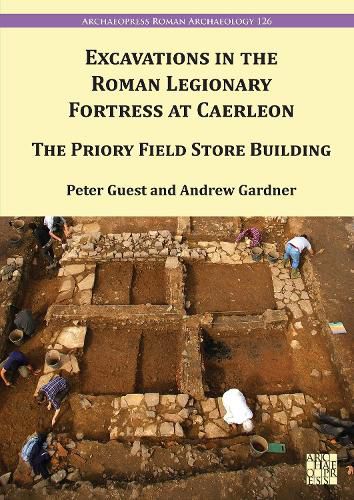Readings Newsletter
Become a Readings Member to make your shopping experience even easier.
Sign in or sign up for free!
You’re not far away from qualifying for FREE standard shipping within Australia
You’ve qualified for FREE standard shipping within Australia
The cart is loading…






The Priory Field excavation, carried out between 2007 and 2010, was a research, training and engagement project that investigated a large courtyard store-building in the legionary fortress of Isca at Caerleon. This was the first building of its kind excavated to modern standards in the Roman Empire and the excavation exposed the building's main entranceway, a guard chamber, a stairwell and four store rooms. The coins and pottery provide an excellent chronological sequence for the store, which was constructed around AD 90-100 and remained in use until the end of the 3rd century, after which it fell into a derelict state before being partially demolished and levelled by around 350. Debris from the building's collapse and demolition sealed the floors of two store rooms, one of which was littered with items of military equipment, many of which survived in a very fragile condition. These included the highly fragmentary remains of a rare example of an elaborately decorated horse's headpiece (chamfron), at least one set of dismantled Newstead-type lorica segmentata body armour, as well as another set of unusual scale armour. Two new buildings were constructed among the ruins of the partially demolished legionary store, including a cottage-like building that radiocarbon dating demonstrates was in use between 430 and 600. This wide-ranging and comprehensive report of the Priory Field excavation contains many fascinating stories about life in Caerleon during the Roman period and in the years after the ending of Britannia at the beginning of the 5th century.
$9.00 standard shipping within Australia
FREE standard shipping within Australia for orders over $100.00
Express & International shipping calculated at checkout
Stock availability can be subject to change without notice. We recommend calling the shop or contacting our online team to check availability of low stock items. Please see our Shopping Online page for more details.
The Priory Field excavation, carried out between 2007 and 2010, was a research, training and engagement project that investigated a large courtyard store-building in the legionary fortress of Isca at Caerleon. This was the first building of its kind excavated to modern standards in the Roman Empire and the excavation exposed the building's main entranceway, a guard chamber, a stairwell and four store rooms. The coins and pottery provide an excellent chronological sequence for the store, which was constructed around AD 90-100 and remained in use until the end of the 3rd century, after which it fell into a derelict state before being partially demolished and levelled by around 350. Debris from the building's collapse and demolition sealed the floors of two store rooms, one of which was littered with items of military equipment, many of which survived in a very fragile condition. These included the highly fragmentary remains of a rare example of an elaborately decorated horse's headpiece (chamfron), at least one set of dismantled Newstead-type lorica segmentata body armour, as well as another set of unusual scale armour. Two new buildings were constructed among the ruins of the partially demolished legionary store, including a cottage-like building that radiocarbon dating demonstrates was in use between 430 and 600. This wide-ranging and comprehensive report of the Priory Field excavation contains many fascinating stories about life in Caerleon during the Roman period and in the years after the ending of Britannia at the beginning of the 5th century.